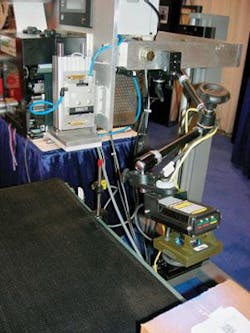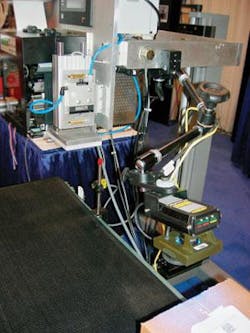System speeds package production
With the demand for increased throughput and disparate product runs, manufacturers are increasingly incorporating automated systems into their production lines. With these systems in place, the manual printing, application, and verification of product labels has evolved into an automated process, relieving human operators of tedious and repetitive tasks. This also has led to demand for system integrators that know how to integrate mechanical, electrical, and electronic systems. When faced with building systems, integrators must understand the intricacies of labeling heads, conveyor mechanisms, PLC controllers, and vision-based label-verification systems.
One integrator, SuperUser Solutions (Bradford, PA, USA; www.su-solutions.com), specializes in developing integrated packaging, barcoding, wireless, and labeling systems. “By controlling the entire automation process from equipment design, database and machine programming, installation, and maintenance, to the management of label and ribbon systems,” says Andy Messineo, director of integration, “we can quickly diagnose and correct any problems whether they be equipment or programming related. This minimizes the customer’s downtime and keeps their operations running efficiently.”
At this year’s Pack Expo in October (Las Vegas, NV, USA), the company showed its latest system, an automatic top labeling system capable of printing, labeling, and verifying products at rates as high as 45 packages per minute. The SuperUser Solutions system is based around an Allen-Bradley Series 1200 programmable logic controller (PLC; see figure). The applicator is built by SuperUser’s equipment manufacturing division, LabelPack (www.labelpackequipment.com).
In the SuperUser Solutions system, boxes to be labeled move along a conveyor, and labels are applied to the center of each package. To do this, data regarding the contents of each label must first be printed and then stored in a smart G3 operator interface panel from Red Lion Controls (York, PA, USA; www.redlion.net) that is interfaced to the PLC, printer, and label-verification system via Ethernet.
As packages move along the conveyor, labels are simultaneously printed on a PAX 110R integrated printer from Zebra Technologies (Vernon Hills, IL, USA; www.zebra.com). After each label is printed, it is transferred to a tamper that can mechanically apply each label to the carton. Before this can occur, the PLC must wait for a trigger signal from an integrated photoelectric sensor from Banner Engineering (Minneapolis, MN, USA; www.bannerengineering.com) placed along the conveyor. When the photoelectric sensor detects a box, the tamping mechanism is lowered onto the box and the label applied. After the box has passed, the photoelectric sensor is reset, ready to be triggered again by the next box.
After each box has been labeled, the barcodes containing information regarding the date, time of packaging, and ingredients of each package must be verified. A photoelectric sensor is used to trigger a P4 Omni PresencePlus sensor from Banner Engineering. After each label is read, the barcode information is displayed on the G3 operator interface. This information can be tied to a reject mechanism or an alarm to alert the operator of misread codes.
“To implement a system based on the G3 interface,” says Messineo, “Red Lion’s PC-based Crimson software must be used.” This graphical-user interface software can be configured on a host PC and at runtime transferred to the host G3 HMI over USB, Ethernet, or manually using flash memory. “For simple applications,” says Messineo, “the software allows you to add, edit, and delete modules such as PLCs, motor drivers, photoelectric sensors, and barcode readers and map data collected from them to other external devices on the network.”
“To configure the PresencePLUS sensor for this application, it is interfaced to a PC running PresencePLUS PC software,” says Messineo. “Then system settings, the barcode inspection, and the communication interface must be set before the sensor is interfaced to the Red Lion HMI.” After configuring the sensor to operate over Ethernet, the Banner vision sensor can automatically transfer discrete I/O and inspection pass/fail information over Ethernet. In this case, however, it was necessary to transfer vision tool results to the Red Lion HMI. “Because of this, a communication tool, available as part of the PresencePLUS software, was used to export measured barcode information to the HMI over an Ethernet interface,” Messineo says. “It allows you to adjust printer and applicator parameters remotely over any Internet connection.”

